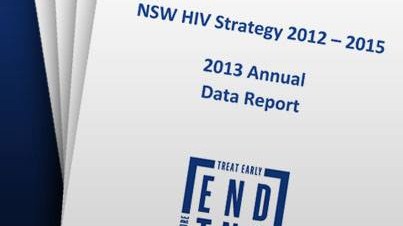
Latest HIV data’s significance strengthens fight: ACON CEO

THE chief executive of ACON has said the state’s latest Annual HIV Data Report was significant because it not only showed a decrease in the number of infections in 2013 compared to 2012, but it also provided a detailed demographic and geographic picture of how the virus was being transmitted.
The news comes after ACON cautiously welcomed the report last week, stating that the information needed to be interpreted cautiously as efforts continued to end HIV transmission in the state by 2020.
The NSW 2013 Annual HIV Data Report shows that 357 new cases of HIV were diagnosed in NSW throughout 2013, a decrease of 13 per cent on the five-year high that was experienced in 2012.
According to the statistics in the report, 278 of those cases were from sexual encounters involving gay and bisexual men, which is a decrease of 16 per cent on 2012 infection rates.
Significant decreases were also recorded among people in the 20-29 age bracket (16 per cent) and the 30-39 age bracket (31 per cent) as well.
“Every year, gay men account for around 80 per cent of new HIV diagnoses in NSW, and the overwhelming majority of people living with HIV in NSW – between 8000 and 9000 – are gay men, so clearly HIV is one of the biggest health issues facing gay men in NSW,” ACON chief executive Nic Parkhill said.
“This information then allows organisations like ACON to develop programs and services which respond effectively and efficiently to help reduce HIV transmission among affected communities, such as gay men.
“It’s important to note that to end HIV transmission, we need to detect virtually all cases of HIV, and this can only be done by getting more people tested.
“This means while HIV notification rates may vary year on year, modelling suggests that in the longer term we may see an increase in notifications due to increased testing. This same modelling suggests that any initial increase would be followed by a sustained decrease once most people with HIV are on treatment, as HIV medicines can now virtually eliminate the likelihood of transmission.”
Parkhill stressed that for HIV transmission to end in NSW by 2020, it was critical that gay men in NSW understood the current context of HIV and how it was impacting the community, as well as the initiatives taken to help prevent it.
“If gay men do not have the most current and update knowledge on HIV and how it is playing out in our community, then we will be living with HIV for another 30 years – and that is not option,” he said.
Parkhill also said any new HIV diagnosis was significant, with consequences on the individual and public health.
“Each of the 357 people in NSW who received a HIV positive test result know how significant these figures are,” he said.
“And for each of their lovers, family and friends, they – more than many – understand in very real terms that HIV is still with us, and it demands continued attention from governments, clinicians, non-government organisations like ACON and – importantly – our community.”
Parkhill said ACON would continue to fight against HIV, and that a part of this strategy was reaching out to areas in Sydney and regional NSW that do not have the higher concentration of gay residents commonly found in inner-city areas of Sydney.
“ACON has partnered with some Local Health Districts to deliver a[TEST] rapid HIV testing services,” Parkhill said.
“Across NSW, Local Health District sexual health clinics and GPs are the main way most men will need to get a HIV test. A lot of sexual health clinics have reconfigured their services so they can now deliver results a lot faster than they used to – which is great.
“It is essential that we have a broad range of testing services and options for gay men to access, and this is why we have been so active in calling for the introduction of home based testing to be added to the testing mix.”
Parkhill said the a[TEST] services in Newtown, Surry Hills and the pop-up shopfront on Oxford St were a success, because unlike the sexual health clinics they are run on community spaces and by other gay men who had training in rapid HIV testing, with the help of a nurse.
“This helps a lot of gay guys feel more comfortable when they access the service,” he said.
Parkhill added they were working with Local Health District partners to ensure gay men – no matter where they lived in NSW – would access rapid testing in ways that were quick, confidential and non-judgemental.
“ACON is assisting Local Health Districts to deliver testing outside Sydney – specifically in the Hunter and Northern Rivers,” he said.
“In the coming year, we are hoping to do more outreach, taking an innovative approach to take HIV testing into community settings.
“While the vast majority of new HIV diagnoses still occur in the Sydney area, this report reminds us all that HIV has no regard for geography – new diagnoses have occurred in a range of places in NSW.”
Parkhill added that while the NSW Government has shown leadership in renewing NSW’s HIV strategy in line with medical and technological advances, it was “critically important” that the Federal Government did the same.
He said there were three immediate actions that should be taken: home-based rapid HIV testing technologies need to be approved for use in Australia; Rapid HIV testing needs to be available under Medicare; and that HIV medicines need to be dispensed from community pharmacies rather than just from hospital pharmacies.
Rapid HIV Testing is available across a number of locations in NSW. For details, visit www.endinghiv.org.au









